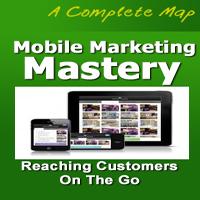


The Impact Of Technological Advancements

In the ever-evolving landscape of the 21st century, technological advancements continue to shape and redefine the way we live, work, and interact with the world around us. From the rapid progress in artificial intelligence to the revolutionary developments in renewable energy, these advancements are not just changing our lives; they're empowering the future. In this article, we'll explore the significance of technological advancements and their profound impact on various aspects of our society.
Artificial Intelligence (AI) And Machine Learning: The realm of AI has made remarkable strides, enabling machines to perform tasks that were once exclusive to humans. AI-driven applications are now ubiquitous, from virtual personal assistants like Siri and Alexa to self-driving cars. Machine learning, a subset of AI, continues to improve the accuracy and efficiency of algorithms, enhancing decision-making processes in fields ranging from healthcare to finance.
Renewable Energy: As concerns about climate change and resource depletion grow, technological advancements in renewable energy have never been more critical. Solar and wind power have become cost-effective alternatives to traditional fossil fuels, reducing greenhouse gas emissions and providing cleaner, sustainable energy sources.
5G Connectivity: The rollout of 5G networks promises to transform the way we connect to the internet. With dramatically increased speeds and reduced latency, 5G opens up possibilities for innovations like augmented and virtual reality, IoT devices, and telemedicine, which rely on lightning-fast data transmission.
Biotechnology And Healthcare: Advances in biotechnology have led to groundbreaking discoveries in gene editing, regenerative medicine, and precision diagnostics. These technologies are poised to revolutionize healthcare, with the potential to cure genetic diseases, develop personalized treatment plans, and extend human life.
Space Exploration: The private sector has become a driving force in space exploration, with companies like SpaceX and Blue Origin pushing the boundaries of what's possible. This has the potential to reduce the cost of launching payloads into space, making it more accessible for scientific research, satellite deployment, and potentially even space tourism.
Blockchain Technology: Blockchain, the underlying technology behind cryptocurrencies like Bitcoin, is now finding applications far beyond digital currencies. It's being used for secure supply chain management, transparent voting systems, and fraud-proof legal contracts, promising to revolutionize various industries.
Advanced Robotics: Robotics is becoming increasingly sophisticated, with machines capable of more delicate and precise tasks. Robots are used in healthcare for surgery and patient care, in manufacturing for automation, and in exploration for tasks too dangerous for humans.
Cybersecurity And Data Protection: As technology advances, so do the threats to data and privacy. Cybersecurity has become a growing concern, driving the development of cutting-edge solutions to protect sensitive information from cyberattacks and data breaches.
Sustainable Agriculture: Technological advancements in agriculture, including precision farming and automated machinery, are improving crop yields while reducing environmental impact. This is essential for addressing food security and sustainability challenges.
These technological advancements are not isolated; they often intersect and create synergies that amplify their impact. For example, AI and robotics can enhance healthcare and manufacturing, while renewable energy can power the servers that drive AI and blockchain applications.
As we move further into the 21st century, technological advancements will continue to redefine our world. Embracing these advancements while addressing the ethical, social, and environmental implications will be crucial to harnessing their full potential. The future holds the promise of a more connected, efficient, and sustainable world, powered by the remarkable innovations of today.
 2. Nurturing Unconventional Skills
2. Nurturing Unconventional Skills
While technical and industry-specific skills are vital, unconventional skills can make a substantial difference. Abilities like creativity, emotional intelligence, adaptability, and lateral thinking can be instrumental in navigating challenges, fostering innovation, and building strong relationships with employees and clients. These skills are often overlooked but can be key to achieving success.
3. Building A Diverse Network
Networking is a well-known avenue to business success, but diversifying your network is often underestimated. Interacting with people from different backgrounds, industries, and walks of life can provide fresh perspectives, new opportunities, and unexpected collaborations. These diverse connections can open doors to success that a homogeneous network may not.
4. Prioritizing Employee Well-Being
Happy and motivated employees are more productive and innovative. Success in business often hinges on the well-being and engagement of your team. Overlooking the importance of employee satisfaction, mental health, and work-life balance can result in talent drain and lower productivity. Prioritizing your team's well-being is an often underappreciated path to achieving success.
5. Sustainability And Social Responsibility
While profit is a fundamental goal for businesses, sustainability and social responsibility can be the overlooked pathways to success.


The Evolution Of The Pocket Revolution
 1. 5G Connectivity
1. 5G Connectivity
One of the most anticipated advancements in mobile technology is the deployment of 5G networks. 5G, which stands for fifth-generation wireless technology, offers unprecedented speed and bandwidth, enabling faster download and upload speeds, low latency, and the ability to connect a vast number of devices simultaneously. This advancement is a game-changer for mobile communication, paving the way for innovations in fields like augmented reality (AR), virtual reality (VR), telemedicine, and autonomous vehicles.
2. Foldable Phones
The introduction of foldable smartphones represents a revolutionary step in mobile device design. These devices offer the flexibility of a tablet and the portability of a smartphone, allowing users to switch between different form factors. Foldable phones are challenging traditional notions of screen size and usability, opening up new possibilities for multitasking, content consumption, and user interaction.
3. Augmented Reality (AR) And Virtual Reality (VR)
AR and VR technologies have rapidly advanced, offering immersive and interactive experiences on mobile devices. AR overlays digital content onto the real world, while VR creates entirely virtual environments. These technologies are being used for gaming, education, training, and even in industries like healthcare for medical simulations and therapy.
Exploring Business Strategies
 2. Goal Setting: The first step in crafting a business strategy is setting clear and measurable goals. Your objectives provide a clear direction for your organization, whether it's increasing market share, improving profitability, expanding into new markets, or enhancing product quality.
2. Goal Setting: The first step in crafting a business strategy is setting clear and measurable goals. Your objectives provide a clear direction for your organization, whether it's increasing market share, improving profitability, expanding into new markets, or enhancing product quality.
3. Market Research: Understanding your market is crucial. Conduct thorough market research to identify your target audience, assess competitors, and uncover emerging trends. This knowledge is fundamental to shaping your strategies.
4. SWOT Analysis: A SWOT (Strengths, Weaknesses, Opportunities, Threats) analysis is a valuable tool in strategy development. It helps you evaluate your internal strengths and weaknesses and external opportunities and threats. This analysis informs your strategies and ensures you leverage your strengths while mitigating weaknesses.
5. Competitive Positioning: Differentiating your business from competitors is essential. Determine your unique value proposition and how you can stand out in the market. Your positioning will guide branding, marketing, and product development strategies.
6. Resource Allocation: Effectively managing resources, including finances, manpower, and technology, is a vital part of business strategy. Allocate resources where they'll have the most significant impact and ensure you have a plan for resource scalability.
Strategies For Success In The Digital Age
 4. SEO And Visibility: Search engine optimization (SEO) is vital for ensuring your online content is discoverable. Optimize your content with relevant keywords and meta tags to improve your visibility in search engine results.
4. SEO And Visibility: Search engine optimization (SEO) is vital for ensuring your online content is discoverable. Optimize your content with relevant keywords and meta tags to improve your visibility in search engine results.
5. Embrace Social Media: Social media platforms are powerful tools for connecting with a global audience. Establish a presence on platforms that align with your audience and industry. Regularly sharing content and engaging with your followers can boost your online presence.
6. Email Marketing: Email marketing remains a highly effective way to communicate with your audience. It allows you to nurture leads, provide personalized content, and maintain strong relationships with your subscribers.
7. Consistency And Authenticity: Consistency in your online presence is essential. Maintain a regular posting schedule and stay true to your brand identity. Authenticity is equally important; be genuine and honest in your interactions.
8. Adapt To New Trends: The digital landscape is constantly evolving. To thrive online, you must be adaptable and open to embracing new technologies and trends. Staying ahead of the curve and being an early adopter can give you a competitive edge.
Reaching Your Audience Proactively
 Television And Radio Advertising: TV and radio ads have been long-standing staples of outbound marketing. They offer a broad reach, allowing businesses to convey their messages to a large audience simultaneously.
Television And Radio Advertising: TV and radio ads have been long-standing staples of outbound marketing. They offer a broad reach, allowing businesses to convey their messages to a large audience simultaneously.
Print Advertising: This includes newspaper and magazine advertisements. While print circulation has declined in the digital age, it remains a relevant channel for reaching specific demographics.
Direct Mail: Sending physical promotional materials, such as brochures or postcards, to a targeted mailing list is a form of outbound marketing. Direct mail can be highly effective when well-executed.
Cold Calling: This involves reaching out to potential customers via phone, introducing products or services, and seeking to initiate sales conversations.
Email Marketing: Although it can also fall under inbound marketing, email marketing campaigns that send promotional messages to a purchased or rented email list are considered outbound. These messages aim to generate leads or conversions.
Trade Shows And Events: Participating in trade shows and industry events provides opportunities to showcase products and services to a relevant audience.
The Enduring Value Of Outbound Marketing
While inbound marketing has gained significant traction due to its non-intrusive and customer-centric approach, outbound marketing continues to be valuable for several reasons:
Wide Reach: Outbound marketing methods can quickly and effectively reach a large audience, making them suitable for brand awareness campaigns.
Tangible Presence: Physical marketing materials, like brochures or billboards, provide a tangible and lasting impression, unlike digital ads that may be easily dismissed.